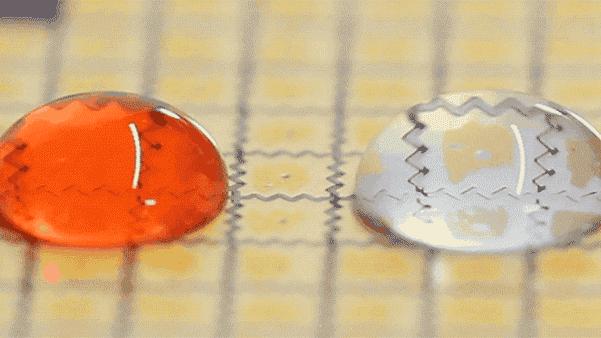naturalinterface
Latest

MIT researchers turn water into 'calm' computer interfaces
Our lives are busy and full of distractions. Modern computing. with its constant notifications and enticing red bubbles next to apps, seems designed to keep us enthralled. MIT Media Lab's Tangible Media Group wants to change that by crafting "calm interfaces." The Tangible Media Group demonstrated a way to precisely transport droplets of liquid across a surface back in January, which it called "programmable droplets." The system is essentially just a printed circuit board, coated with a low-friction material, with a grid of copper wiring on top. By programmatically controlling the electric field of the grid, the team is able to change the shape of polarizable liquid droplets and move them around the surface. The precise control is such that droplets can be both merged and split. Moving on from the underlying technology, the team is now focused on showing how we might leverage the system to create, play and communicate through natural materials.

Microsoft messes with 'natural' user interface, featuring eye tracking, voice control and wild body gestures
While today's Windows might not look completely out of place next to a Windows of yore, Microsoft Research certainly has some wild ideas for how to progress computer interaction. In a talk during Microsoft's college tour, Craig Mundle has been touting his research wares, including some pretty reasonable advances like auto completion of common concepts; automatic, intelligent sorting of large amounts of data; and a movable, modular work surface. One of the odder demos involves moving the LCD so it's flat on the desk and then using huge arm movements to manipulate a 3D model projected onto a piece of glass, and the demonstration of eye-tracking is intriguing while not altogether convincing. Of course, we've got a while before we'll see any of this stuff in real products, but perhaps we won't have to wait so long as ten years for that "2019" vision of the future to come to pass. Hit up the read link for the videos.

